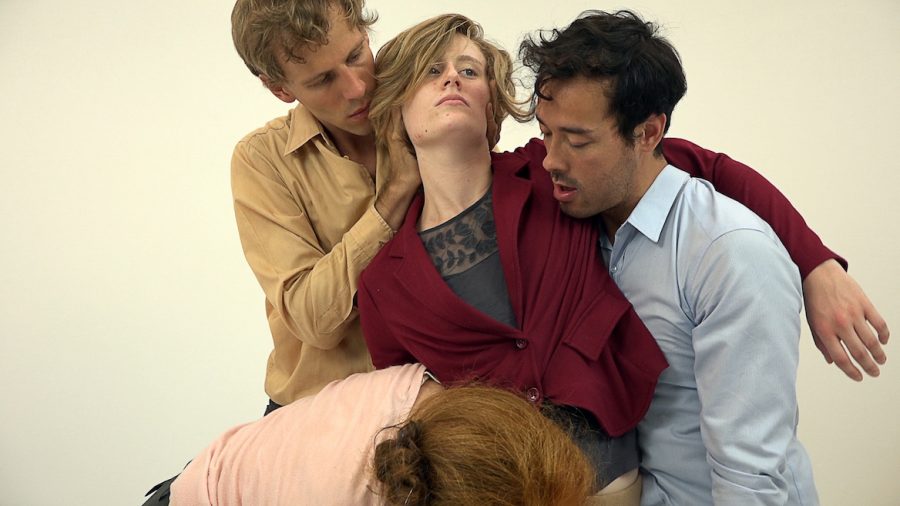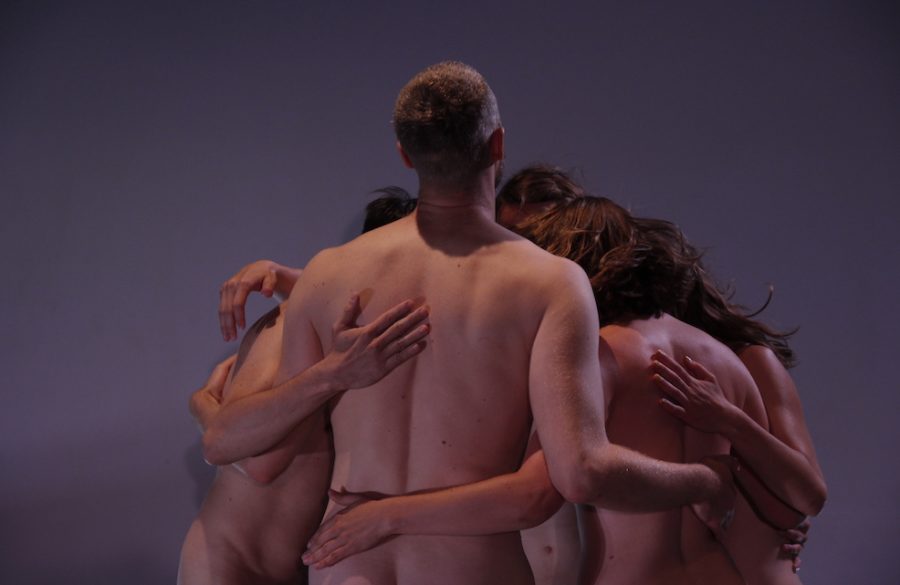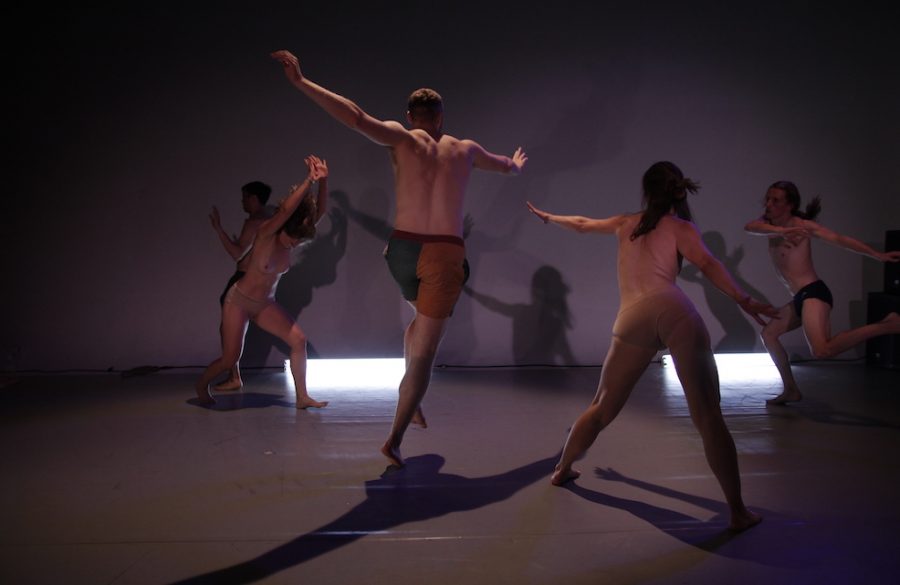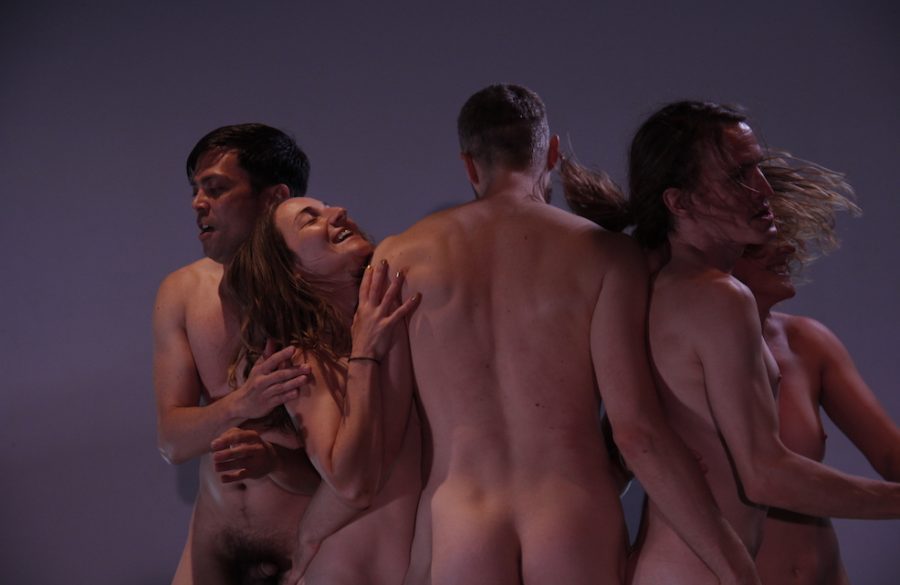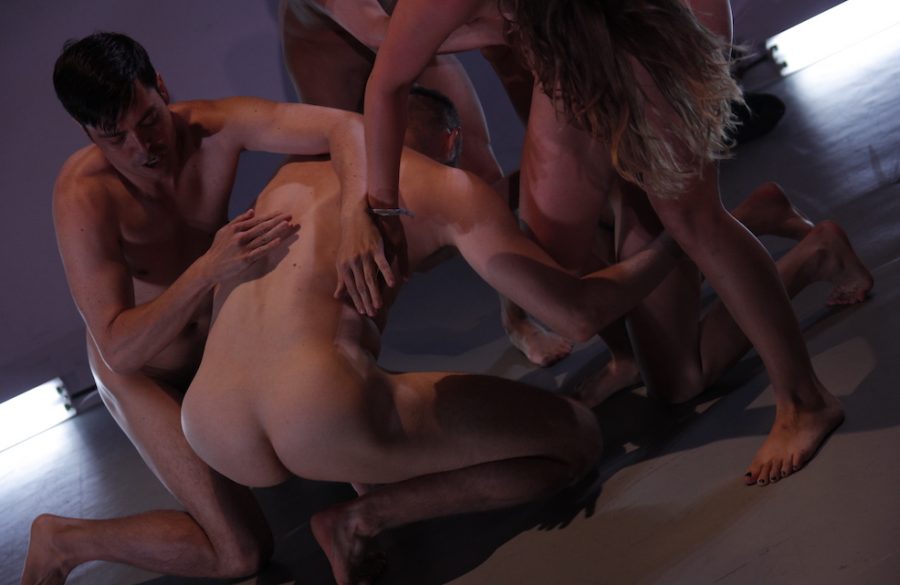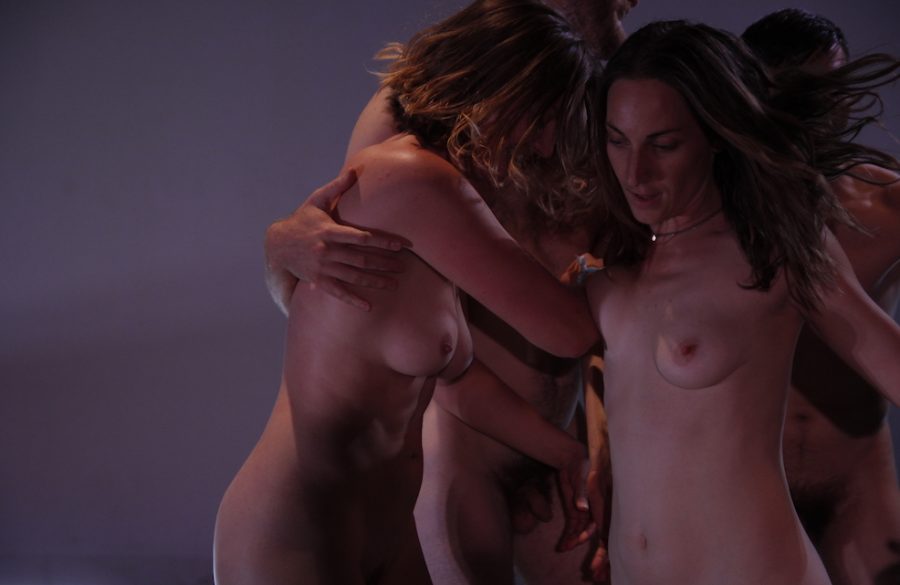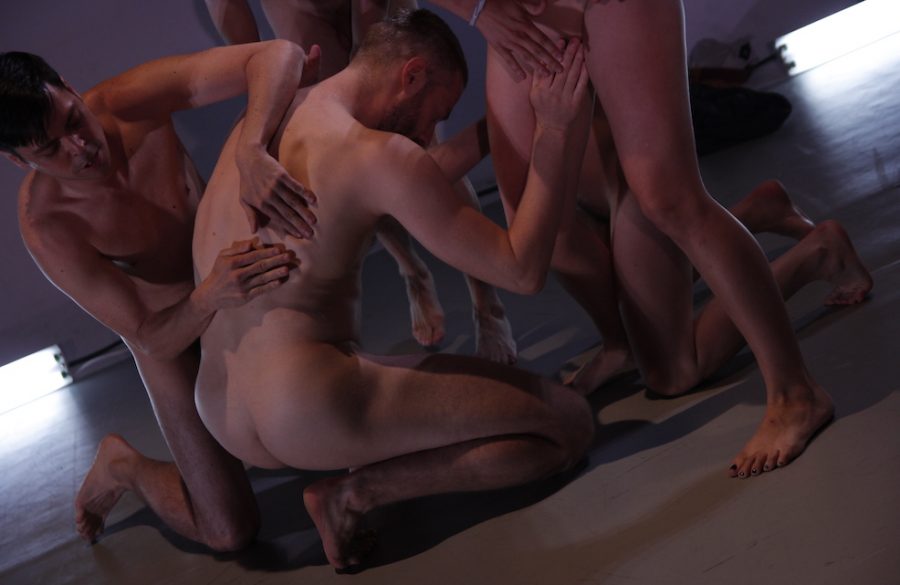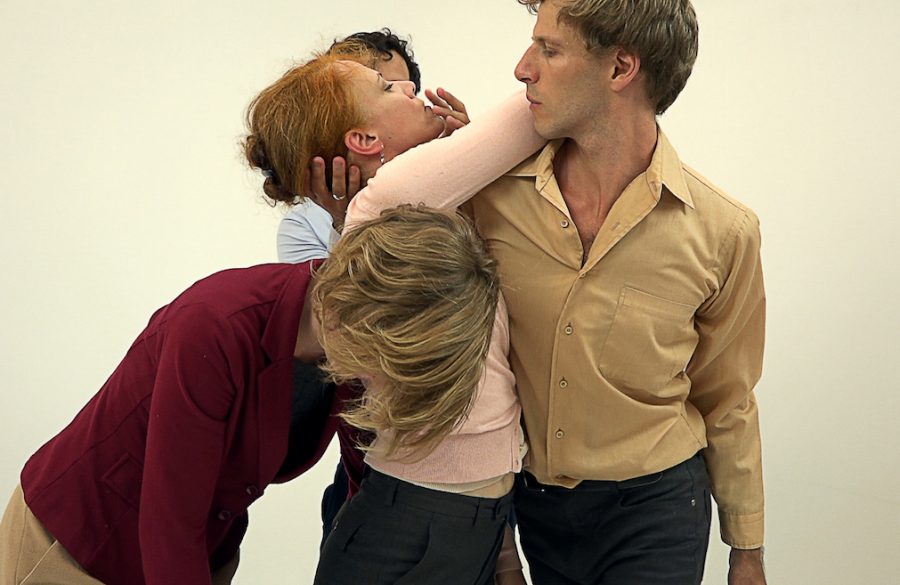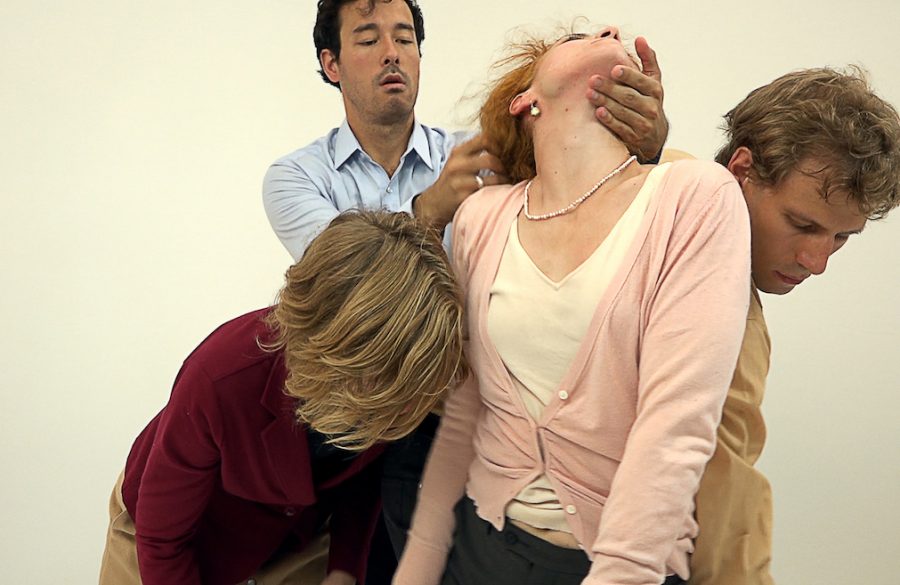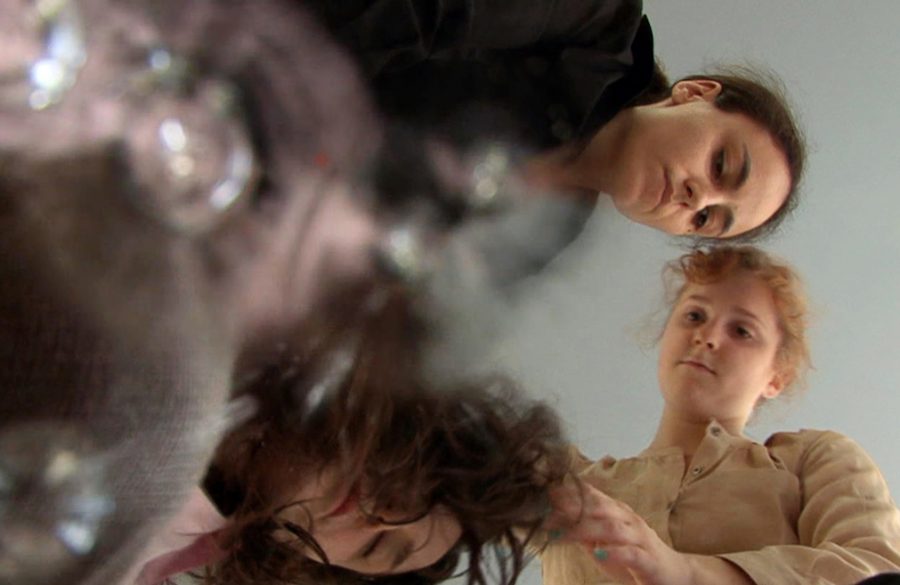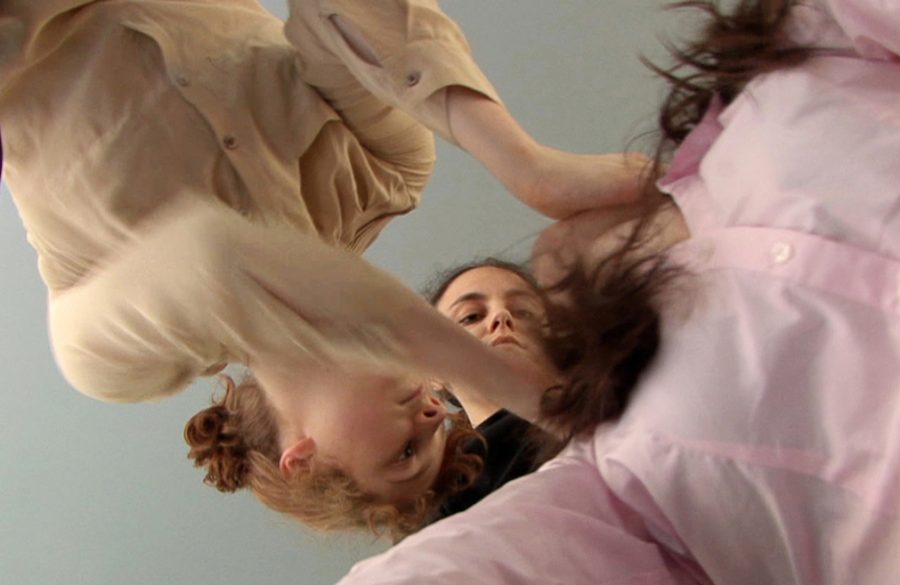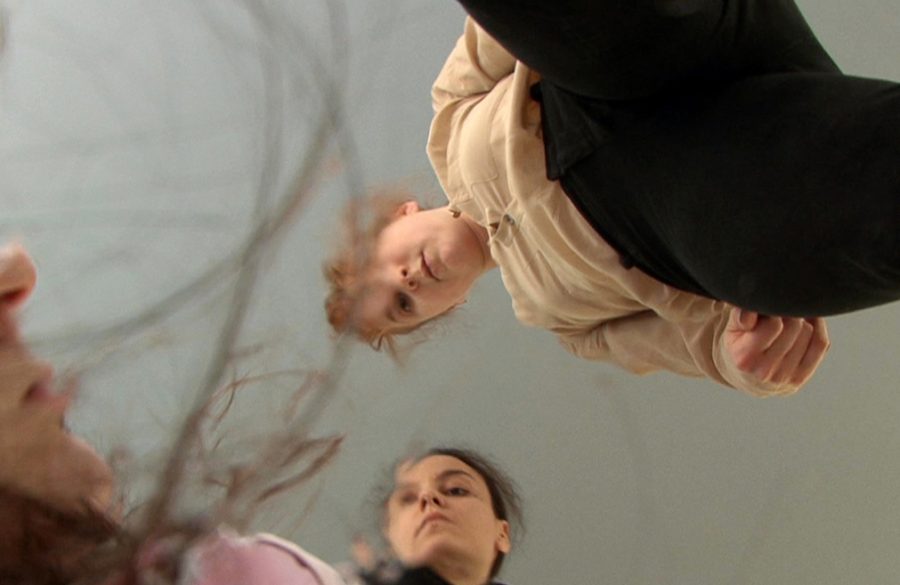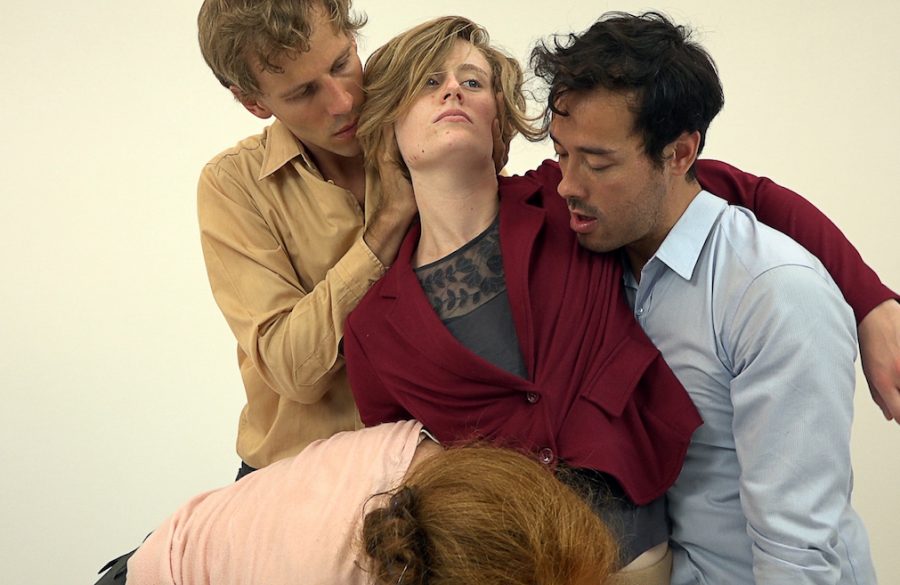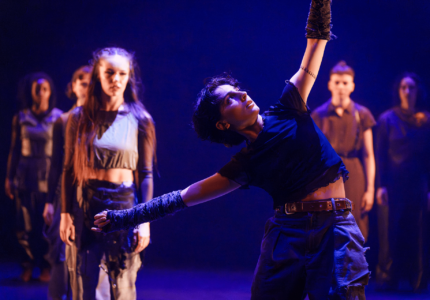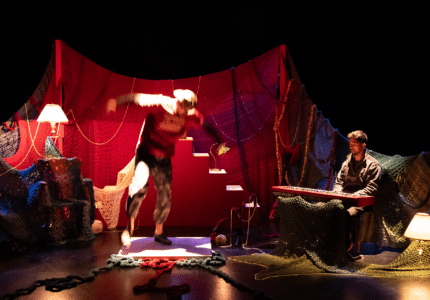Triple bill
Joey Eddy, William Ellis, Robert Kingsbury, Kate Nankervis, Andrew Tay + Bettina Hoffmann
JANUARY 31 + FEBRUARY 1. 2, 2019 - 7:30PM
FEBRUARY 3, 2019 - 4PM
-
DISCUSSION WITH THE ARTISTS AND BOOK TABLE ON FEB. 1
Joey Eddy, William Ellis, Robert Kingsbury, Kate Nankervis, Andrew Tay (Toronto)
WorkingOn WorkingOnUs
Blurring the lines between a wild party and rigorous physical research, these artists find joy in uncomfortable situations. This queer body experience explores the power dynamics between dancer and choreographer as an exciting possibility for spectacle. Working with skin and flesh as material is delightfully complicated! This is a subversive and playful repurposing of the rehearsal process as a choreographic gesture; avoiding theatricality for real decision-making that pushes the boundaries of what a performance can be.
Production Indefinable Folks
Creation and performance Joey Eddy, William Ellis, Robert Kingsbury, Kate Nankervis, Andrew Tay
Lighting design Karine Gauthier
Dramaturgy Ame Henderson
Scenography François Lalumière
Andrew Tay is a hybrid performer, choreographer and dance curator based in Montréal. In 2005 he co-founded (with collaborator Sasha Kleinplatz) the company Wants&Needs danse. Since then, the company has produced the wildly popular dance events Short & Sweet, Piss in the Pool and the Total Space Party. His work Make Banana Cry (co-authored by Stephen Thompson) was performed at the MAI (2017) and La galerie de l’UQAM in the context of the exhibition Refus Contraire (2018). His recent work Fame Prayer / EATING was presented at Théâtre Lachapelle (Montréal 2018), Fierce Festival (UK 2017) and received the Risk and Innovation Award from the Summerworks Performance Festival (Toronto 2016). In 2017, he joined the team of the O Vertigo Centre for Creation (CCOV) as Artistic Curator. Tay actively thinks about community, irreverence and resistance in both his performance and curatorial practices.
Joey Eddy began life in the Pacific Ocean, swimming with orcas. They are a queer and non-binary interdisciplinary dance artist with a strong background in voice and music. Joey is currently based in Toronto and is a School of Toronto Dance Theatre graduate. Joey works collaboratively with artists and collectives such as Bad New Days (Summerworks 2016), Aria Evans, Jamee Valin, Justin DeLuna, Kari Pederson, Brandy Leary, Mystic Horde (The Dark Lady, A Bakkhanalilan Coven), Lo Bil (Rhubarb 2017, “Speak to the Vagina”), and Mary- Dora Bloch-Hansen and Susan Wolf. They are also a “part-time lover” at The Toronto Dance Community Love-In. Joey enjoys harmonizing, casting spells, and increasing blood flow within the body and the fabrics of the universe.
William Ellis is a performer working in theatre, film, and video. He has created work for First Thursday at the Art Gallery of Ontario and for Dancemakers Flowchart series. Other performance work include Hot Cuts and Even This Old Town Was a Forest by Aurora Stewart de Peña, Other Jesus for Public Recordings, S h e e t s by Salvatore Antonio, Greg MacArthur’s A Man Vanishes, This Play Wins with JP Faienza and Jordan Tannahill’s Feral Child. He has performed with choreographer DA Hoskins in The Coating Project for the Luminato Festival, Machinery Room and This is a Costume Drama at Harbourfront Centre’s World Stage (Dora Award for Best Performance, Ensemble). He’s been awarded a Toronto Theatre Critics Award – Special Citation for Videofag, an ongoing collaboration with Jordan Tannahill. The Videofag Book was recently published by BookThug and was long-listed for a 2018 Toronto Book Award.
Robert Kingsbury is a multi-disciplinary artist practicing somatic and conceptual approaches to choreography. A graduate of York University’s Fine Arts program, Robert works in the fields of videography, music composition and dance. His work has been self-produced, presented at Summerworks, the Rhubarb Festival, Dance Matters, Guelph Dance, commissioned by DUO and performed by Toronto Dance Theatre & Cadence Contemporary Ballet. Robert has danced for many independent choreographers including D.A. Hoskins, David Earle, Bill James, & Andrea de Keizjer. He has performed across Ontario, in Montréal, Berlin & NYC. Robert was honored to receive the 2011 Premiere’s Award for Emerging Artist. In 2014, with the support of the OAC Chalmers, he mentored in facilitating somatic research with Shannon Cooney of Berlin for 3 months. Other training highlights include 5 intensives with the Trisha Brown Dance Company and an internship with Dancetheatre David Earle. Robert is a Biodynamic Craniosacral Therapist and practitioner of Somatic Experiencing.
Kate Nankervis is a Canadian dance artist, performer, producer and curator. A graduate of York University, BFA Dance (2008), she has worked and performed with Blue Ceilings Dance/Lucy Rupert, Andrew Tay/Wants&Needs danse (MTL), Amanda Acorn, Angie Cheng, Omar David Rivero, Bee Pallomina, Heidi Strauss, ParahumansDance Theatre, and internationally with Neil Callaghan and Simone Kenyon (UK), Erato Tzavara (Athens), Albrecht Zeipert (Berlin), and Tino Sehgal (Berlin). Her work considers bodies in mediated and immersive environments for performance and gatherings. Recent projects include Emerging Voices Project at Toronto Dance Theatre, Horizon at Summerworks Performance Festival (Toronto) and (in)visible Lines at Athens Video Dance Project, with Erato Tzavara and Albrecht Zeipert. She is a Lover (co-Artistic Director) with the Toronto Dance Community Love-In and creator/co-curator of Toronto’s experimental contemporary dance series PS: We Are All Here. She has held a co-Artistic Director position at hub14 art + performance works (2013-2017), a studio space for performance with a focus on research and residencies. She is a recipient of Ontario Arts Council’s Chalmers Fellowship for her research on creating innovative spaces for performance, artists and audiences.
Born in Granby in 1983, Francois Lalumière is a multidisciplinary artist who lives and works in Montréal. He studied at Concordia University. Since 2008, he presents his work and collaborative projects as part of group shows and solo exhibitions in artist centres such as L’Écart (Rouyn-Noranda), Espace F (Matane), Centre CLARK, Articule, Eastern Bloc, and DARE-DARE (Montréal). He has participated in artistic events such as Nuit blanche 2011 with Art souterrain (Festival Montréal en lumière) and Chromatic organized by MASSIV’art at Société des arts technologiques.
Our main objective is to problematize the power dynamics that exist between dancer and choreographer. We approach this research by setting up choreographic structures and working methods that reveal complicated issues inherent to hierarchies, consent, and identity found when working with the human body. WorkingOn WorkingOnUs is a reflection on relevant issues such as power, trust, labor, authorship, surrender and resistance that are an integral part of dance making, but are so often hidden and confined to the studio portion of the working process. We are interested in making these negotiations visible as material for choreography and dance making.
Our research involves creating a performance structure that subverts the idea of a normative dance rehearsal process. By subversively re-purposing the hierarchical structures of the rehearsal as a choreographic gesture, our work seeks to valorize the working relationship between dancer and choreographer as an exciting possibility for spectacle. We are interested in exposing the beauty of searching, the joy of discovery and the surprising body magic that occurs in these types of relationships.
Bettina Hoffmann
Drain + Hold On
Two distinct video works share an ethos as the camera’s mechanical eye follows the slow and suspended movements of the dancers from intimate and unusual perspectives, immersing us in conflicts that shift between violence and tenderness. The framing is tight, but the space – defined only by amplified noises emitted by the performers – seems vast and empty. Through experimentation and play, arbitrary rules are introduced into the dancers’ tasks, limiting natural and instinctive action and forcing proximity. The physicality is rough and intense. As roles shift, so do alliances.
Choreography, video, lighting design, costumes, postproduction Bettina Hoffmann
Hold On dancers Keven Lee, Katie Philp, Ilya Krouglikov, Mélanie Lebrun
Drain dancers Kate Ladeheim, Freja Mitchel, Suzan Polat
Bettina Hoffmann’s work is located at the intersection of photography, sculpture, film, dance and theatre. In recent work she reconstructs and subtly dramatizes everyday situations or uses “displaced movements” to facilitate the examination of the underlying mechanisms of social relations, conflicts and communication. Her performances were presented at the Darling Foundry, Tangente and Occurrence in Montréal. Her photo and video work was exhibited in group and solo shows in Germany, the Netherlands, Austria, England, Romania, South Korea, the USA and Canada, and her videos were presented at festivals and video art fairs internationally. Her work is in several private and public collections in North America and Europe, e.g. the Museum of Contemporary Photography in Chicago, Los Angeles County Museum of Art, Musée d’art contemporain de Montréal, Musée national des beaux-arts de Québec, and Berlinische Galerie in Berlin. Originally from Berlin, she is based in Montréal.
I am starting with movement improvisations based on everyday movements with a small group of dancers. In the process, rules are introduced that limit the range of body movements that does not allow for habitual or instinctive movements and consequently force the dancer to work against it, unlearn and relearn (e.g. not being allowed to use hands to hold a falling person in Hold On). Those improvisations lead towards unusual, sometimes slightly unsettling movements with contradicting elements. They result in ambiguous movements that can shift back and forth from violent or passive-aggressive movements to those that could be interpreted as caring or caressing. The process reflects similar mechanisms that form a community: adopting a behaviour and obeying rules while demonstrating its arbitrariness. Sculptural and spatial parameters like verticality and horizontality are used to reflect on power and vulnerability. The ability to move independently or only with the help of others suggests the interdependence of people in a system, visualises social (dis)engagement, but also the conflict between the mental and the corporeal. Through this work I am interrogating our notions of subjectivity, interiority and exteriority, as well as reality and its construction.

